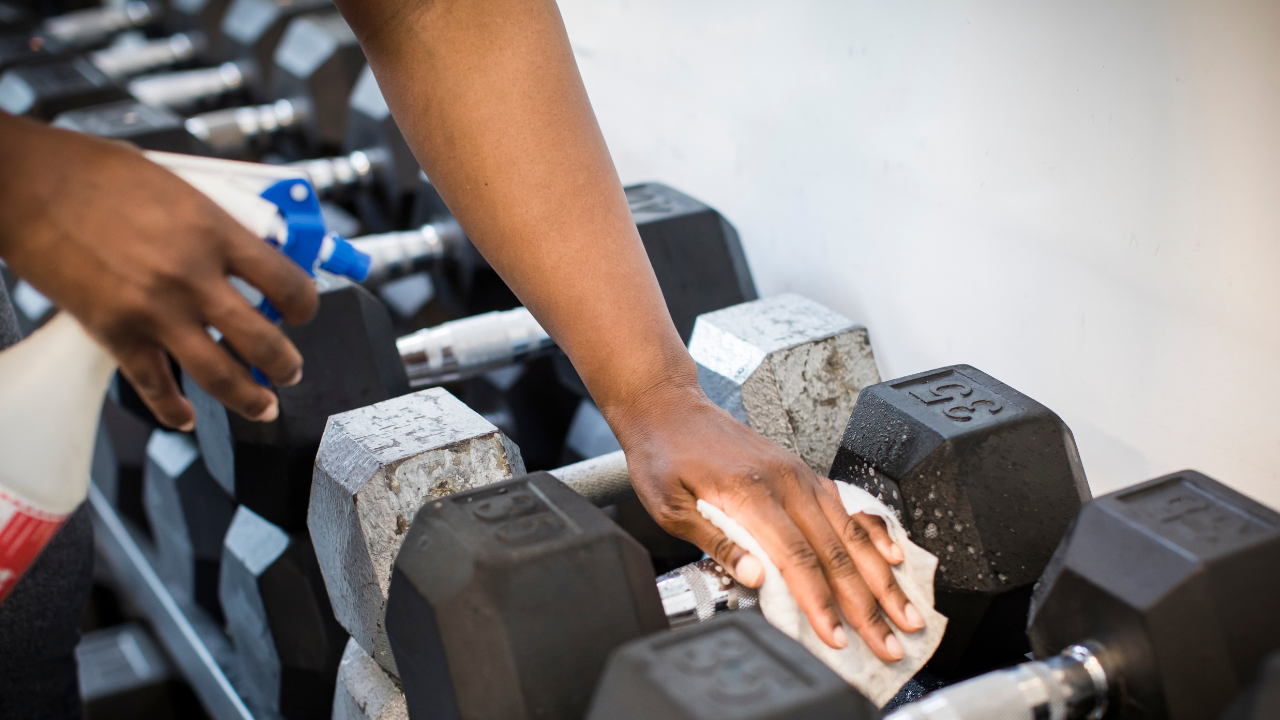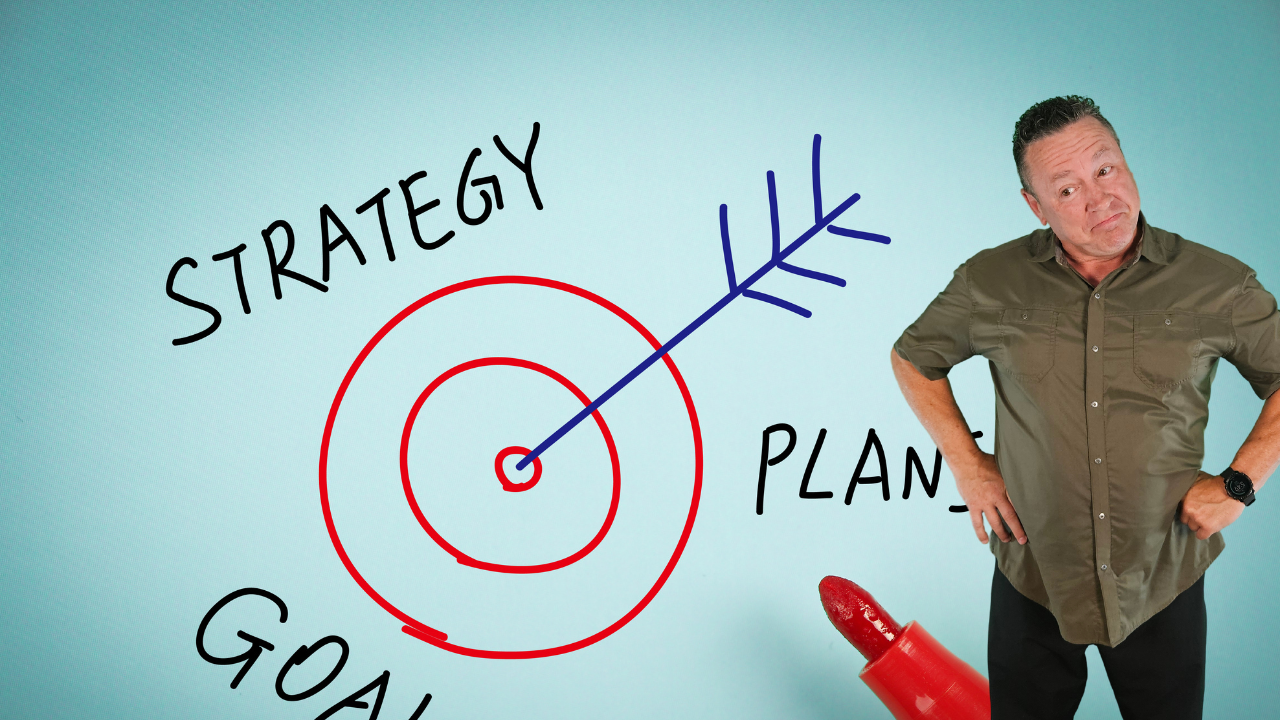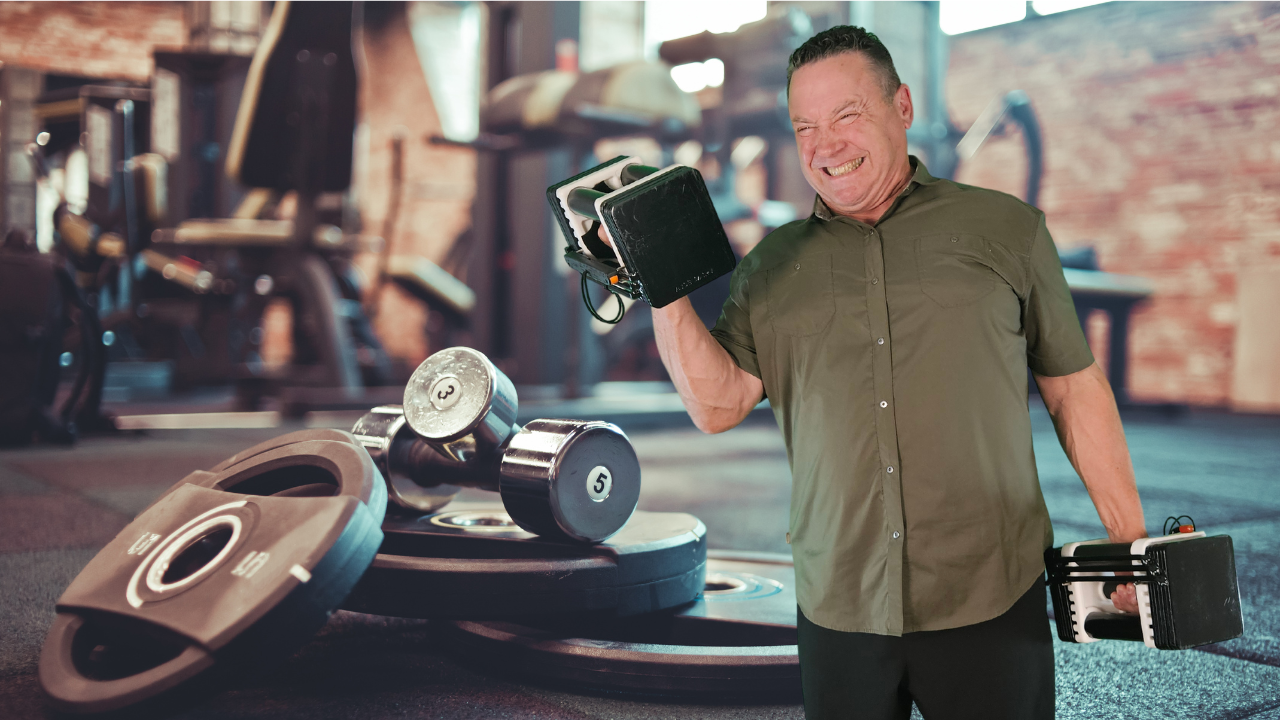Best Practices for Cleaning and Maintaining Gym Equipment

Best Practices for Cleaning and Maintaining Gym Equipment
Maintaining a clean, well-functioning gym is essential for both safety and customer satisfaction. A clean environment not only prevents the spread of germs but also keeps equipment in top shape, extending its lifespan and enhancing the member experience. Proper cleaning and maintenance also contribute to a professional, welcoming atmosphere that attracts and retains clients. Here are the best practices for keeping your gym equipment spotless and fully operational.
1. Establish a Regular Cleaning Schedule
Creating and sticking to a regular cleaning schedule is the first step in maintaining a pristine gym. A structured cleaning plan ensures that no piece of equipment gets overlooked, helping your staff keep up with daily, weekly, and monthly cleaning tasks.
• Daily Cleaning: Disinfect high-touch areas like handles, buttons, and touchscreens on machines. Wipe down benches, weights, and cardio machines, focusing on areas members frequently contact.
• Weekly Deep Cleaning: Dedicate one day each week to deep-cleaning specific equipment pieces. This might include thoroughly disinfecting all machine parts, washing floors beneath equipment, and cleaning ventilation areas.
• Monthly and Seasonal Tasks: Each month, check for any areas that require more attention, such as mats, yoga equipment, and upholstery. Inspect cables, belts, and pulleys for wear, and replace filters in HVAC systems as needed.
Implementing a cleaning schedule provides a consistent standard of cleanliness that clients will appreciate.
2. Use the Right Cleaning Products
Not all cleaning products are suitable for gym equipment. Some chemicals can damage surfaces, while others may not be effective enough for disinfecting. Choosing the right products is crucial for protecting your equipment and ensuring client safety.
• Disinfectants: Look for non-toxic, EPA-approved disinfectants specifically designed for fitness equipment. These products kill germs without harming surfaces.
• Gentle Cleaners for Screens and Electronics: Use alcohol-free wipes or sprays on electronic screens and touchpads to prevent streaking and damage.
• Avoid Bleach and Harsh Chemicals: These can corrode metal and damage rubber or plastic parts. Opt for gym-specific or gentle disinfectants to protect your equipment investment.
Using the appropriate products ensures equipment is disinfected without risking wear and tear.
3. Train Staff on Proper Cleaning Techniques
Even with the right products, cleaning techniques matter. Staff should be trained on how to properly disinfect equipment to prevent damage and ensure effective germ removal.
• Wipe, Don’t Spray: Avoid spraying disinfectant directly onto equipment, which can seep into electronics or cause buildup. Instead, spray on a cloth and then wipe down the surfaces.
• Follow Dwell Time Guidelines: Disinfectants need time to work—usually a few minutes. Teach staff to allow disinfectants to sit on surfaces before wiping them off.
• Use Microfiber Cloths: These are effective at picking up dust and bacteria without scratching or damaging equipment surfaces. They’re also more eco-friendly than disposable wipes.
By properly training staff, you’ll ensure that cleaning is consistent, effective, and safe.
4. Encourage Members to Clean Equipment After Use
Empowering members to clean equipment after each use is a powerful way to maintain cleanliness throughout the day. Providing easy access to cleaning supplies and promoting a “clean after use” policy encourages accountability and keeps your gym sanitary.
• Set Up Cleaning Stations: Place cleaning stations with disinfectant spray bottles, wipes, and trash cans throughout the gym for easy access.
• Post Signage: Use clear signage to remind members to wipe down equipment after use. This small step can go a long way in promoting a clean environment.
• Lead by Example: Have staff occasionally walk through the gym, wiping down equipment to reinforce the message. Members are more likely to follow suit when they see staff actively maintaining cleanliness.
Creating a culture of cleanliness ensures that members feel comfortable and safe using your gym facilities.
TAKE OUR FREE COURSE -
4 Secrets to Dominate Your Fitness, Wellness, and Recovery Business in 2024
5. Regularly Inspect Equipment for Wear and Tear
Routine maintenance is essential to prevent costly repairs and ensure safety. By proactively inspecting equipment, you can identify minor issues before they become major problems.
• Check Cables, Belts, and Pulleys: Look for signs of fraying, cracking, or other wear. Replacing worn parts early prevents equipment failure and potential injuries.
• Inspect Moving Parts: Lubricate and check all moving parts on machines, such as treadmills and ellipticals, to prevent stiffness or grinding noises.
• Tighten Bolts and Screws: Over time, bolts and screws can loosen, especially on high-use equipment. Regularly check and tighten them to keep equipment stable and safe.
Preventive maintenance not only extends the life of your equipment but also creates a safer environment for clients.
6. Rotate Equipment to Distribute Wear Evenly
Rotating equipment periodically is a smart strategy to reduce wear on high-use machines. Moving popular machines to different areas of the gym can spread out usage and reduce the chance of equipment breaking down prematurely.
• Swap Locations: Move popular equipment, like treadmills or elliptical machines, to different areas of the gym every few months. This reduces overuse in specific spots and gives all machines a longer lifespan.
• Rotate Accessories: Shift free weights, kettlebells, and resistance bands to distribute wear and prevent constant stress on the same pieces.
This rotation strategy keeps equipment in top shape for longer, saving you money in replacement costs.
7. Create a Preventive Maintenance Schedule
Beyond daily cleaning, a preventive maintenance schedule is essential to keep equipment running smoothly. Schedule regular checkups with equipment technicians or designate a staff member responsible for inspecting equipment.
• Monthly and Quarterly Maintenance: Create a calendar with specific maintenance tasks for each piece of equipment. Regular oiling, tightening, and calibration should be part of this schedule.
• Professional Inspections: Schedule periodic visits from certified technicians who can perform a thorough inspection and address issues your team might miss.
Having a preventive maintenance plan helps you avoid sudden breakdowns, ensuring that clients have access to safe and functional equipment.
8. Track and Document Maintenance and Repairs
Documenting maintenance tasks and repairs is crucial for staying organized and accountable. By keeping a log, you’ll have a clear record of when equipment was serviced, helping you identify any recurring issues.
• Maintenance Logs: Use a logbook or digital system to record each cleaning, inspection, and repair. Include dates, parts replaced, and the staff member responsible for the task.
• Equipment History: Track the history of repairs for each piece of equipment, which can help you determine if it’s time for a replacement.
• Regular Audits: Periodically review maintenance logs to ensure tasks are completed on schedule and identify patterns in equipment wear.
Having accurate records not only helps with accountability but also supports budgeting and planning for future equipment needs.
By following these best practices for cleaning and maintaining gym equipment, you’ll create a safer, more inviting space for clients. Regular maintenance reduces repair costs, improves equipment longevity, and ensures a consistently high-quality experience for members.
A clean, well-maintained gym isn’t just good business; it’s essential for building trust and loyalty among your members. Take advantage of these practices and see the positive impact on both client satisfaction and your bottom line.
4 Secrets to Dominate Your Fitness, Wellness, and Recovery Business in 2024 – Start here to understand essential strategies for growth.
What’s Your Plan? – This course provides a roadmap to building a successful business, especially useful during times of change.
How to Sell PT at the Point of Sale – Learn to effectively sell personal training and wellness services and increase conversions.
Personal Coaching – Work one-on-one with a consultant for customized guidance on building a resilient fitness business.





